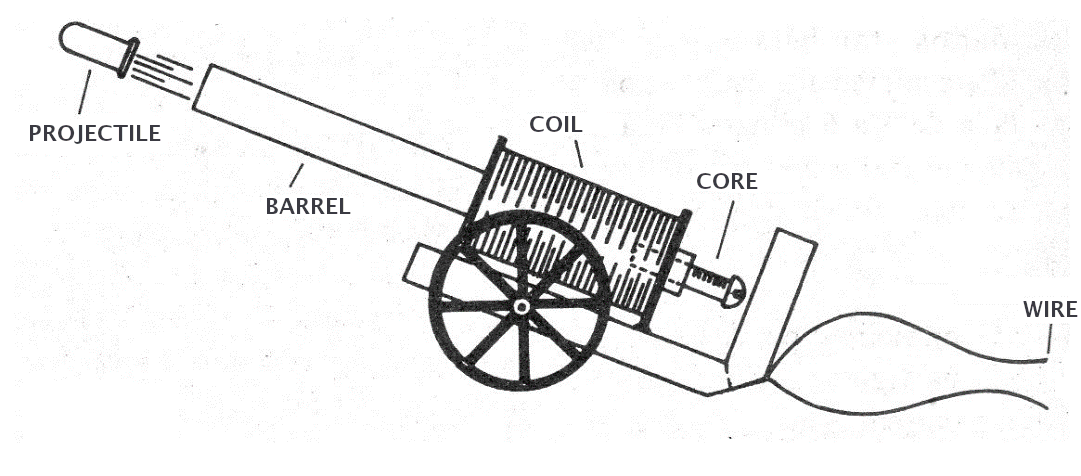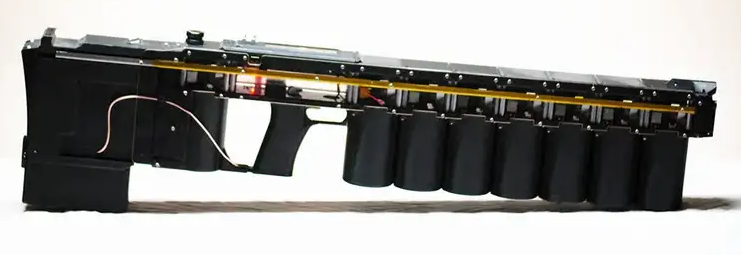Electrical phenomena have always attracted inventors to use them in weapon development. We can mention, as an example, Tesla, who would have used his rays and other discoveries in an attempt to create powerful weapons.
In his biography, we find the citation of infallible weapons, "death rays", that would operate according to the principles of electricity. We can find quotes of weapons in the biographies of many other inventors.
However, although many have only recently become feasible, such as laser, others are yet to be announced.
One of them is the electromagnetic cannon mentioned only as a toy or for curiosity so far.
Thus, we can give as an example our articles, in which we describe "toy cannons", although there is even a version that can be dangerous, and that was of the last we published and the one we will show.
Let's analyse the operating principle of several projects that we publish and are available on the website through the links at the end of the article.
In a first possibility, we can take as an example an electromagnetic cannon that we published in the 60s in our Eletrônica Para Juventude series of the Eletrônica Popular magazine and later in many others, with the aspect shown in Figure 1.
The operating principle is that of the solenoid. A coil creates a strong magnetic field when an electric current flows through it, as shown in Figure 2.
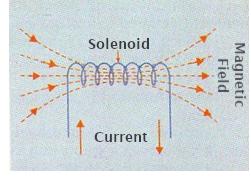
The intensity of the field depends on several factors such as:
a) Number of coil spirals.
b) Electric current intensity.
c) Existence or not of a core within it.
It is observed that if we place a core of ferrous material that concentrates the magnetic field lines in the vicinity of a solenoid, a force appears to pull this core into the coil, as shown in Figure 3.
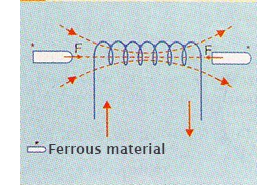
Based on this fact, we can design devices capable of producing mechanical force when pulling a core, called solenoids.
Figure 4 is an example of an ordinary solenoid.
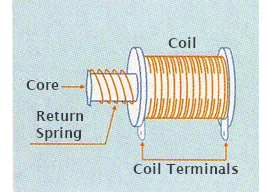
When the circuit is switched off, the spring keeps the core of the solenoid's ferrous material outside of the coil's core.
When we energise the circuit and the coil is flowed by an electrical current, the magnetic field created pulls the core (plunger), launching the projectile forward.
The main problem with this type of cannon, which perhaps has prevented its practical application, is obtaining a sufficiently strong magnetic field to launch the projectile with the necessary speed.
We improved this with a cannon published in several places, emphasising the book Mechatronics for the Evil Genius – TAB Books – 2005. We employed a capacitive discharge circuit.
The prototype photo is shown in Figure 5.
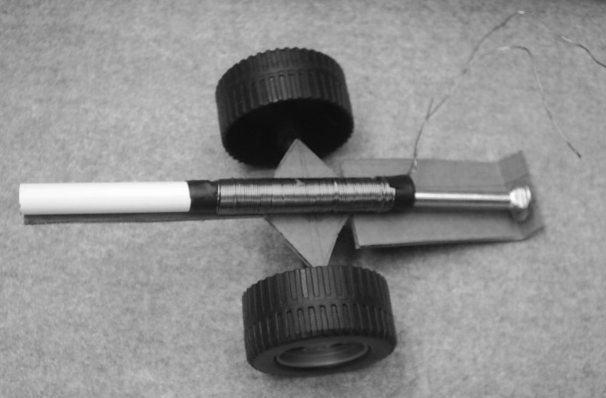
In this version (see the link to the article), a very high-value capacitor, charged with high voltage, was discharged through a coil, violently pulling the piston (screw) and thus throwing the projectile away.
It was already an improvement. In the article, I suggested a configuration that came to be tested and called Gauss Cannon due to the application of magnetic fields.
In the first, even sold in a construction kit format, powerful neodymium magnets accelerate the metal projectile. In a second possibility, sequentially actuated solenoids or coils are used to accelerate the ferrous material projectile, as shown in Figure 6.

Experiments show that it is possible to achieve very high projectiles speed with considerable destructive effects.
However, there was a limitation: The energy source. The circuit to power the accelerator coils needed to be very powerful, consuming an enormous amount of energy. It was a severe limitation for obtaining handguns or mobile weapons.
But, the development of new components made it possible to apply the basic idea in a weapon that was recently announced as the first for portable use.
The possibility came with the creation of the supercapacitor.
Thus, New Scientist magazine (which is not always taken entirely seriously – caveats must be made about the news) announced the first electromagnetic rifle in August 2021. (See the news link at the end of the article.)
Presented by the Los Angeles company Arcflash Labs, it consists of a set of accelerator coils sequentially actuated by the discharge of supercapacitors. (Figure 7)
No details were provided regarding the battery that recharges the supercapacitors and the type of circuit used, as the electric currents must be very intense at the instant of discharge. The interval for this would determine the repetition rate of the shots.
The working principle is already evident, and the limitations to develop a practical project are being overcome. With it, we believe that, soon, we will have weapons significantly reduced in weight and size for practical use.
Suppose you are interested in experimenting with this type of application. In that case, you will undoubtedly want to know how to calculate the available energy that would eventually be transferred to the projectile in the form of kinetic energy.
For this, we suggest reading the article FIS002 – Cálculos com supercapacitores on our website (and the Revista INCB mentioned above) and thus determine which type of capacitor should be used in your weapon. (The article and the magazine are in Portuguese.)
But be careful! You will be amazed at the theoretical results, even using a small 50 F commercial supercapacitor, for example.
Link to original news:

